Supplies of the Ship Modeler's Handbook are running out. Get your copy NOW before they are gone! Click on photo to order.
×
-
Posts
1,965 -
Joined
-
Last visited
Reputation Activity
-
 Trussben got a reaction from Mike Y in HMS Pegasus 1776 by Trussben - 1:48 - Swan-class sloop based on TFFM
Trussben got a reaction from Mike Y in HMS Pegasus 1776 by Trussben - 1:48 - Swan-class sloop based on TFFM
Well, as much as I respect some peoples views - I do respect my own taste and views as well - captains choice - so here is how my Pegasus will be going forward!
-
 Trussben reacted to stuglo in HMS Pegasus 1776 by Trussben - 1:48 - Swan-class sloop based on TFFM
Trussben reacted to stuglo in HMS Pegasus 1776 by Trussben - 1:48 - Swan-class sloop based on TFFM
beautiful
-
 Trussben got a reaction from CiscoH in HMS Pegasus 1776 by Trussben - 1:48 - Swan-class sloop based on TFFM
Trussben got a reaction from CiscoH in HMS Pegasus 1776 by Trussben - 1:48 - Swan-class sloop based on TFFM
Well, as much as I respect some peoples views - I do respect my own taste and views as well - captains choice - so here is how my Pegasus will be going forward!
-
 Trussben got a reaction from Javelin in HMS Pegasus 1776 by Trussben - 1:48 - Swan-class sloop based on TFFM
Trussben got a reaction from Javelin in HMS Pegasus 1776 by Trussben - 1:48 - Swan-class sloop based on TFFM
Thanks Everybody
Here is what it looks like from 12” away now she is back on the build board.
-
 Trussben got a reaction from usedtosail in HMS Pegasus 1776 by Trussben - 1:48 - Swan-class sloop based on TFFM
Trussben got a reaction from usedtosail in HMS Pegasus 1776 by Trussben - 1:48 - Swan-class sloop based on TFFM
Thanks Everybody
Here is what it looks like from 12” away now she is back on the build board.
-
 Trussben got a reaction from Rustyj in HMS Pegasus 1776 by Trussben - 1:48 - Swan-class sloop based on TFFM
Trussben got a reaction from Rustyj in HMS Pegasus 1776 by Trussben - 1:48 - Swan-class sloop based on TFFM
Thanks Everybody
Here is what it looks like from 12” away now she is back on the build board.
-
 Trussben got a reaction from James G in HMS Pegasus 1776 by Trussben - 1:48 - Swan-class sloop based on TFFM
Trussben got a reaction from James G in HMS Pegasus 1776 by Trussben - 1:48 - Swan-class sloop based on TFFM
Thanks Everybody
Here is what it looks like from 12” away now she is back on the build board.
-
 Trussben got a reaction from bruce d in HMS Pegasus 1776 by Trussben - 1:48 - Swan-class sloop based on TFFM
Trussben got a reaction from bruce d in HMS Pegasus 1776 by Trussben - 1:48 - Swan-class sloop based on TFFM
Thanks Everybody
Here is what it looks like from 12” away now she is back on the build board.
-
 Trussben got a reaction from druxey in HMS Sphinx 1775 by Hollowneck - FINISHED - Vanguard Models - 1:64
Trussben got a reaction from druxey in HMS Sphinx 1775 by Hollowneck - FINISHED - Vanguard Models - 1:64
A Masterclass in Diorama art and Ship model building!
Fantastic Ron.
-
 Trussben got a reaction from Jeronimo in HMS Pegasus 1776 by Trussben - 1:48 - Swan-class sloop based on TFFM
Trussben got a reaction from Jeronimo in HMS Pegasus 1776 by Trussben - 1:48 - Swan-class sloop based on TFFM
Thanks Everybody
Here is what it looks like from 12” away now she is back on the build board.
-
 Trussben got a reaction from claybaker in HMS Pegasus 1776 by Trussben - 1:48 - Swan-class sloop based on TFFM
Trussben got a reaction from claybaker in HMS Pegasus 1776 by Trussben - 1:48 - Swan-class sloop based on TFFM
Well, as much as I respect some peoples views - I do respect my own taste and views as well - captains choice - so here is how my Pegasus will be going forward!
-
 Trussben reacted to hollowneck in HMS Sphinx 1775 by Hollowneck - FINISHED - Vanguard Models - 1:64
Trussben reacted to hollowneck in HMS Sphinx 1775 by Hollowneck - FINISHED - Vanguard Models - 1:64
@HardeeHarHar & @TomShipModel
A big "Thank You" to you both. Much appreciated.
The ship model is finished now that I've added rope lashings to hold the ship's boat securely to Camilla's midships skids and made a few touch-ups, mostly minuscule paint daubs; these additions are not worth a Build Log update. The full diorama also got a final coat of Liquitex High Gloss Varnish (an acrylic) so that the seascape looks very wet now. I'll take a couple photos of how this looks and post them soon.
The case will now get some finishing work and then I'll take studio photos to post here in the Gallery. The staining and sealing is dependent somewhat on weather which means it may possibly be a few weeks before this gets accomplished.
-
 Trussben reacted to hollowneck in HMS Sphinx 1775 by Hollowneck - FINISHED - Vanguard Models - 1:64
Trussben reacted to hollowneck in HMS Sphinx 1775 by Hollowneck - FINISHED - Vanguard Models - 1:64
Progress shots of Camilla's starboard and stern waters now complete.
First stage for fashioning the stern wake.
Completed wake; a good amount of sea foam added to her rudder. This shot shows her prominent list to starboard.
Change of lighting; lots o' drama. Water gets very"inky."
A higher angle view of her port side (missed this one on the previous post).
All the principal water features are complete with only a high gloss acrylic left to apply overall.
Time to choose a good, complementary stain for the case.
-
 Trussben reacted to hollowneck in HMS Sphinx 1775 by Hollowneck - FINISHED - Vanguard Models - 1:64
Trussben reacted to hollowneck in HMS Sphinx 1775 by Hollowneck - FINISHED - Vanguard Models - 1:64
After the base painting has completely dried, the next step is to fashion the wave tops, seafoam on an "active" sea, the wake that appears along the hull that imparts movement to the ship, the all-important stem and stern with random water splashes on the model to give the water realism.
The materials to make the foam, the crests of whitecaps, the foaming wake of windblown water along Camilla's hull and at her stem & stern. These acrylic mediums work with pure white synthetic cotton batting to give form and dimensionality to the somewhat mono-chromatic green/grey water surface. Regular paint brushes in different sizes are used, nothing unusual in the way of tools required for any of these painting steps. Shown here, Liquitex Matte Medium, Light Modeling Paste and eventually, the Gloss Varnish applied to the entire completed diorama water surface.
This is the polyester "batting", medicinal "cotton" pulled apart with fingers into thin open strands: labor-intensive work like other aspects of this time-consuming process. I purchased a bag of Halloween Spider Web making material at Michael's, a craft store. The bag has enough of the material to do dozens of water dioramas! From past experience with similar materials, I was interested to see how this specific material would work to form the crests and sea foam I envisioned for this seascape.
This synthetic "cotton" is worked into the areas between the model's hull and the opening to the immediately adjacent water surface with a paintbrush soaked with medium matte (acting as an adhesive). The matte medium creates translucency and dries clear. When applied it appears "milky." This step involves patience as you tamp down the polyester material with matte medium and a paintbrush primarily. However, other hand tools like tweezers and fingers will also shape the creation of the foam and white water wave crests. The goal is to create something approximating bubbly, splashing foam from agitated water. Anything that doesn't resemble this, do it over.
Also (Big Tip)no straight lines, anywhere. There's no symmetry to water: it's chaotic-looking, especially in the ocean with no discernible patterning. Wind and rain further make it move in unpredictable, non-linear ways.
We are creatures that favor symmetry. This is an unconscious inertia and has to be recognized as one tries to replicate nature, water specifically.
The intense lighting in this photo along the hull and adjacent areas is from a small, portable LED flashlight (which has a cool blue spectrum 5K output). Even with all the overhead lighting I still need intense close-up light in some spots that end up in dark recesses and shadows.
The large wave at Camilla's port bow, in-process. The still wet, milky matte medium can be seen in foreground areas. Foam on the sea surface (and under the surface occasionally) is billions of tiny air bubbles; this is the effect I try to replicate with small sections of the polyester cotton-like material glued to the relatively smooth underlying surfaces.
The large, dramatic bow wave is completed. In this photo, smaller wave tops on surrounding crests will still need to be created.
When I see something on the surface during this process that doesn't look like it belongs there, I remove it! The two small "blobs" at the bottom left were removed and the surface touched-up. Some of the polyester "wave tops" are too spindly looking here; additional dollops of matte medium were used to reshape them so they didn't appear hairy- which is one drawback of using this material. The material - when it isn't sold as "Halloween Spider Webs" is called medicinal cotton balls. It is inexpensive, and easier to shape and glue than its cotton equivalent partially because it isn't an organic substance. I learned this the hard way with previous dioramas. In this photo I've started on Camilla's stern wake. These two main areas (bow and stern) influence the model's movement in the diorama and are the most important and critical areas so I focus on these intensely.
Here are several views of the nearly-finished port bow wave area. The model is now firmly seated in the diorama's opening with matte adhesive, medicinal cotton material and some gloss white acrylic modeling paste (see the photo showing the Liquitex acrylic materials above).
These last few photos show a more accurate representation of the diorama's water color.
A little "splash"on her bow...
Sharp eyes will see the sailor climbing upward along the foremast's shroud ratlines...
With this area now satisfactory to my eye, I will move on to other areas of the diorama with the same techniques described here. The next series of photos in my log will primarily show the results of these same processes explained in this post; starboard and stern water, other finished views.
Once all the wave crests and the various elements of the active wake are finalized there is yet another final step to making the water glisten. Even in overcast weather conditions, in the dreary drizzly weather and in the angry sea that Camilla navigates, water still needs to "look wet." That's the job of the gloss varnish coming up after all this foam and wake work has been completed.
-
 Trussben reacted to hollowneck in HMS Sphinx 1775 by Hollowneck - FINISHED - Vanguard Models - 1:64
Trussben reacted to hollowneck in HMS Sphinx 1775 by Hollowneck - FINISHED - Vanguard Models - 1:64
Making HMS Camilla's "Angry Sea" commences: painting turbulent water.
This photo looks uninspiring but its intent is to show the black acrylic Gesso that will be painted over the entire surface of the plaster-smoothed surface of the water, edge-to-edge. The texture of the uneven plaster surface can be seen clearly here. This first painting step, underpainting, is a critical one that will figure importantly in the creation of the deep, brooding water of the English Channel.
We're looking at the port side of Camilla's water setting. The large gathering bow wave shape looms on the left side. The Black Gesso dries flat. Pretty ugly at this stage. The blue painter's tape protects the case moldings since this step gets messy.
At the stern where there will be lots of rudder wake turbulence, the Black gesso is worked into the roughened surface from the previous work with the toilet paper "skinning" and subsequent smoothing with fine grit sandpaper to remove divots that don't resemble "water." The black underpainting is painted as evenly as possible across the entire diorama's surface.
This photo shows a test piece (foreground) for the water I created for a previous diorama: HMS Swan. The Swan water was created to portray a blue/green hued ocean with minimal wave action; smooth sailing, just a few white wave crests. The test shows the effect of underpainting in white, not black: a brighter surface. Underpainting is done to convey "depth" as the subsequent acrylic colors will be somewhat translucent because matte medium is also added to the palette color mix. In the background is the dry black gesso and a test of the green/grey hues I want for Camilla's turbulent sea setting.
This is the color "palette" for the green/grey hues. Green is made from the combo of yellow and blue. In this instance, two hues of yellow are used. To lighten and darken the mix of green, white and black are added - even a small touch of red - as the black gesso surface gets painted. The acrylic paints will dry to a semi-gloss lustre. Matte medium is in a separate open container as well as a simple dish of water to thin the paint during the color layering.
A first layer of a luminescent green hue is painted across the entire surface. This photo is at the ship's port bow, the top of a large, crashing wave.
Another view of the large wave that will be hitting the model's port bow. Lighter hues of green/grey are layered atop one another.
Like this. To the raised wave "tops" of the entire seascape, lighter shades of green are painted on top of the darker green "base color." To make this variable color palette, white as well as black acrylic paint is mixed into the green paint, along with matte medium acrylic.
Oops! Right opening, wrong model. Comic relief to reduce some of the tedium and get cheap laughs...
Another view of the green base coloration. Looks weird owing to the overhead lighting. Due to the successive coats of layered paint, the surface needs to dry thoroughly before attempting the next stage.
To convince the skeptics this is going to turn out well, here's a preview of where this painting step is eventually headed (in Hollywood terms, a flash-forward)
Next up: I add the wave "action": the wave tops, the all-important foam that will show movement, the effect of the wind on the surfaces, the wakes alongside the hull at her stem and stern.
-
 Trussben got a reaction from mtaylor in HMS Pegasus 1776 by Trussben - 1:48 - Swan-class sloop based on TFFM
Trussben got a reaction from mtaylor in HMS Pegasus 1776 by Trussben - 1:48 - Swan-class sloop based on TFFM
Thanks Everybody
Here is what it looks like from 12” away now she is back on the build board.
-
 Trussben reacted to hollowneck in HMS Sphinx 1775 by Hollowneck - FINISHED - Vanguard Models - 1:64
Trussben reacted to hollowneck in HMS Sphinx 1775 by Hollowneck - FINISHED - Vanguard Models - 1:64
Now that it's dried, it's time to turn the smoothed plaster surface into water, as follows:
Water-thinned white glue, a stiff brush and a roll of SINGLE-PLY toilet paper.
The following close-up photos are pretty self-explanatory, assorted views of what happens when you "work" the toilet tissue to the plaster surface to create small rivulets, washes and wind "wrinkles." Some of the textures will become wave peaks. There are lots of "happy accidents" in this phase of water making. If a straight line appears, get rid of it by manipulating the stiff brush. An ugly wad appears, pick it off, start over with another piece of torn paper, work the paper so that it makes random textures. Tear-off various sizes of paper too, no straight edges!
NOTE BENE: these intense close-ups make the water surface resemble the the surface of the moon or Mars. From a normal viewing distance these details will transform into an ocean that's being troubled by an intense wind.
A piece of toilet paper that hasn't been "worked" into a water shape.
NG! These straight edges need to be reworked while the paper and glue is still wet...
Love how this appeared! TP edges in the previous pic mostly disappeared; paint color and acrylic wave build-up details will mask the tiny irregularities. This lumpy splooge will be a "back wash wavelet" atop the Bigger Wave that Camilla's bow is smashing against.
This is a tedious step (like some aspects of rigging!), but well worth the effort.
The entire surface of the diorama gets this toilet paper treatment, even the smoother sections.
Almost done (with this step). In time terms, we've moved past a halfway mark for the diorama's water creation. The "arty stuff" is coming-up soon: a handful of acrylic paints and various mediums.
My "Easter Egg." For posterity, of course. My father also left his initials on the inside of his "Fly" head (see my previous post response to OldSalt1950).
Taking a "break" now on the diorama. Touch-ups and then choosing the colors for painting comes next.
And, I'm returning to loose ends on the model: a lengthy Mainmast pennant to make (another trip to Staples), dozens of rope coils to hang, loose rigging lines to nail down, tying down a launch and the spare topmast on the midship skids, even clean freshly- laundered britches for Cpt Wigglesworth.
-
 Trussben got a reaction from KentM in HMS Pegasus 1776 by Trussben - 1:48 - Swan-class sloop based on TFFM
Trussben got a reaction from KentM in HMS Pegasus 1776 by Trussben - 1:48 - Swan-class sloop based on TFFM
Thanks Everybody
Here is what it looks like from 12” away now she is back on the build board.
-
 Trussben got a reaction from Knocklouder in HMS Pegasus 1776 by Trussben - 1:48 - Swan-class sloop based on TFFM
Trussben got a reaction from Knocklouder in HMS Pegasus 1776 by Trussben - 1:48 - Swan-class sloop based on TFFM
Well, as much as I respect some peoples views - I do respect my own taste and views as well - captains choice - so here is how my Pegasus will be going forward!
-
 Trussben got a reaction from VTHokiEE in HMS Pegasus 1776 by Trussben - 1:48 - Swan-class sloop based on TFFM
Trussben got a reaction from VTHokiEE in HMS Pegasus 1776 by Trussben - 1:48 - Swan-class sloop based on TFFM
Thanks Everybody
Here is what it looks like from 12” away now she is back on the build board.
-
 Trussben reacted to VTHokiEE in HM Sloop Echo 1781 by VTHokiEE - 1:48 - Cross-Section
Trussben reacted to VTHokiEE in HM Sloop Echo 1781 by VTHokiEE - 1:48 - Cross-Section
Big milestone - all the frames are raised - Hooray! I'm currently trying to decide if I should add the scupper "boxes" (for lack of a better term) now or later. I would only add them on the un-planked side as I believe they will be completely invisible on the planked side - is that correct? I'm a little (or maybe a fair amount) nervous about fairing. Mainly:
Accidentally rounding the first and last frame (I'm also wishing that I was a lot more precise about my spacers. I left them a bit longer than I should have and don't see a great way to cut them down so I suppose that will be some added sanding there). Fragility - I need to remove the section from the building board which at least doubles my risk of clumsy hands. Any tips before I dive in? (aside from the reminder to go slow 😁)
-
 Trussben got a reaction from JpR62 in HMS Pegasus 1776 by Trussben - 1:48 - Swan-class sloop based on TFFM
Trussben got a reaction from JpR62 in HMS Pegasus 1776 by Trussben - 1:48 - Swan-class sloop based on TFFM
Thanks Everybody
Here is what it looks like from 12” away now she is back on the build board.
-
 Trussben got a reaction from tlevine in HMS Pegasus 1776 by Trussben - 1:48 - Swan-class sloop based on TFFM
Trussben got a reaction from tlevine in HMS Pegasus 1776 by Trussben - 1:48 - Swan-class sloop based on TFFM
Thanks Everybody
Here is what it looks like from 12” away now she is back on the build board.
-
 Trussben got a reaction from garyshipwright in HMS Pegasus 1776 by Trussben - 1:48 - Swan-class sloop based on TFFM
Trussben got a reaction from garyshipwright in HMS Pegasus 1776 by Trussben - 1:48 - Swan-class sloop based on TFFM
Thanks Everybody
Here is what it looks like from 12” away now she is back on the build board.
-
 Trussben got a reaction from hollowneck in HMS Pegasus 1776 by Trussben - 1:48 - Swan-class sloop based on TFFM
Trussben got a reaction from hollowneck in HMS Pegasus 1776 by Trussben - 1:48 - Swan-class sloop based on TFFM
Thanks Everybody
Here is what it looks like from 12” away now she is back on the build board.


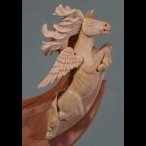
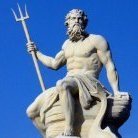
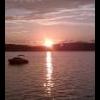
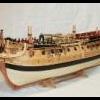
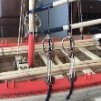


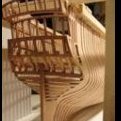



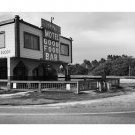


.jpg.d84ec4dad1d7791e855dca06210ab6f3.thumb.jpg.f45209242e851d4409eca1a09293165b.jpg)